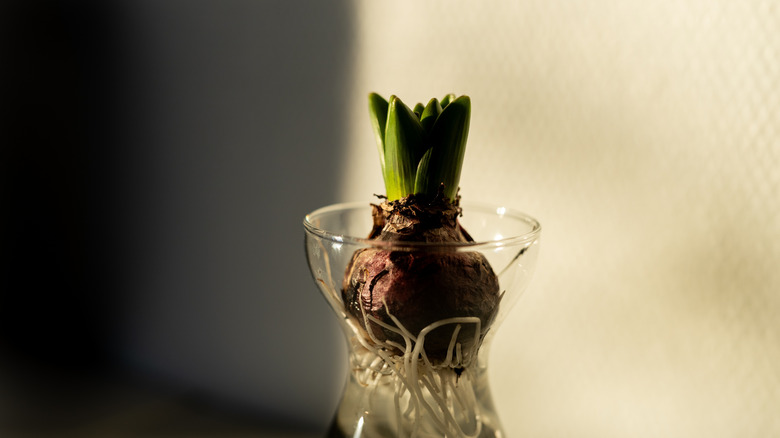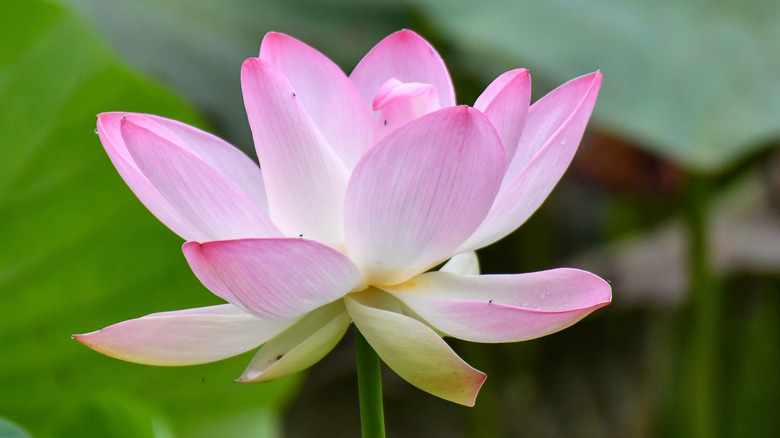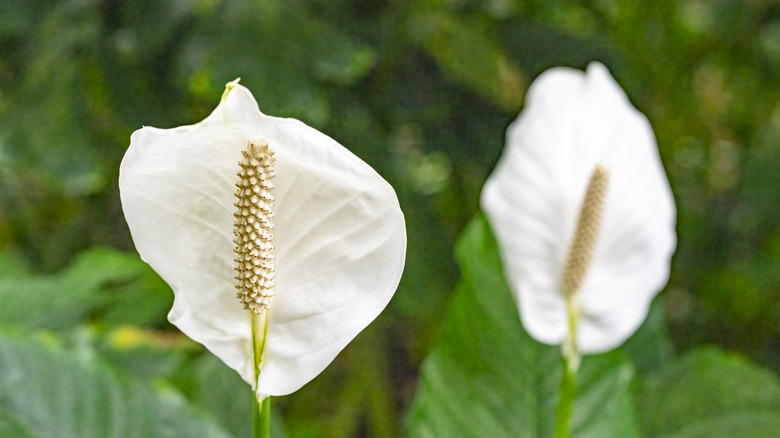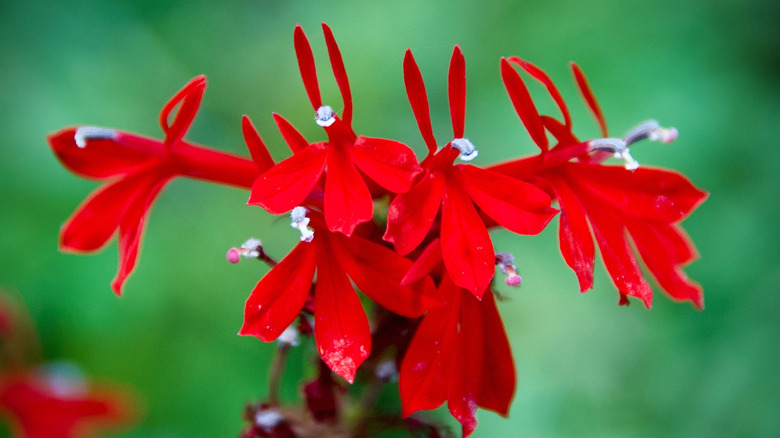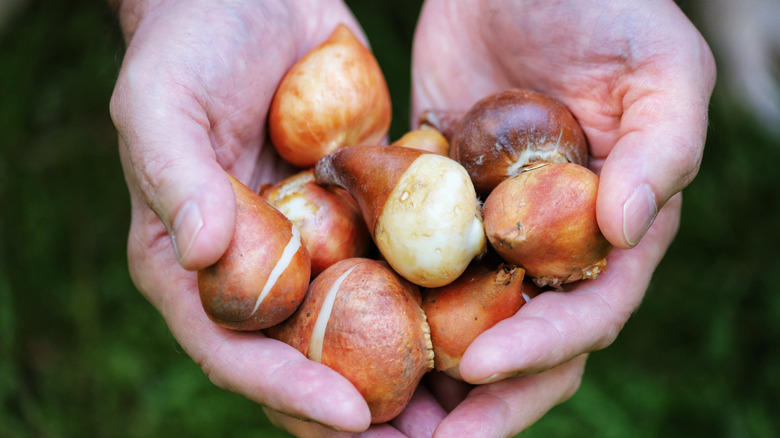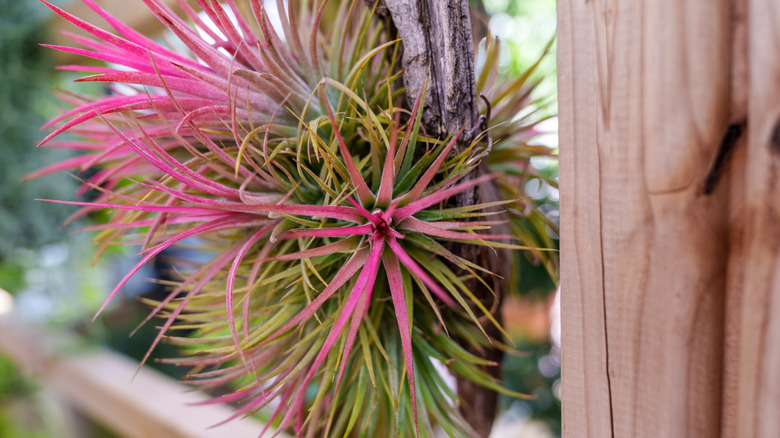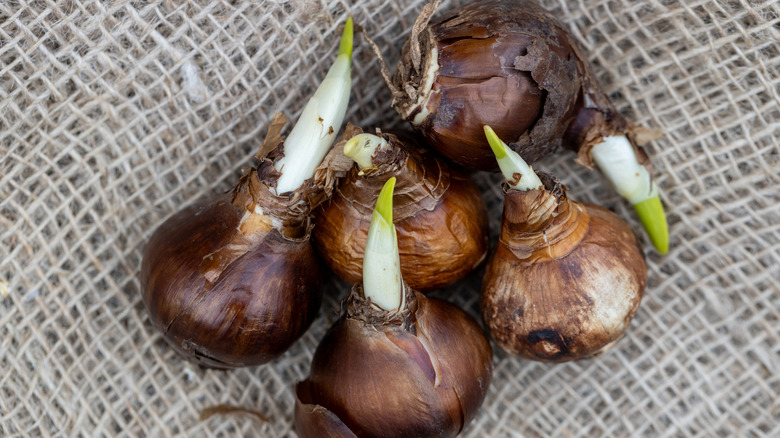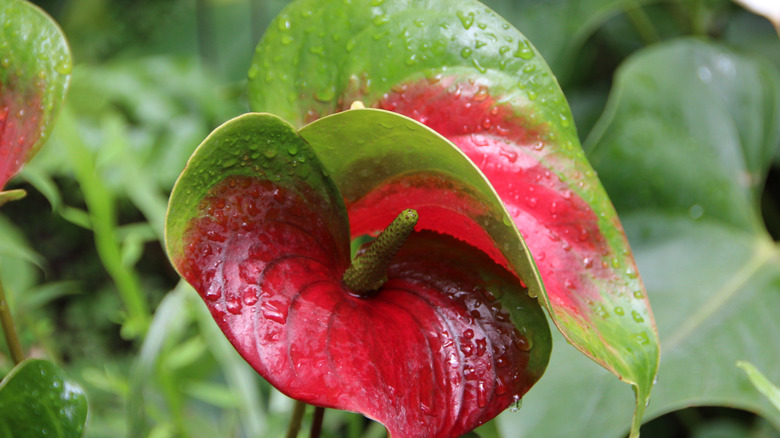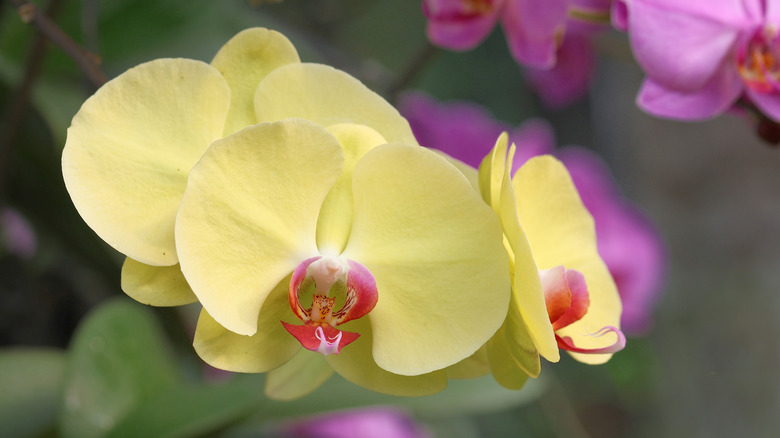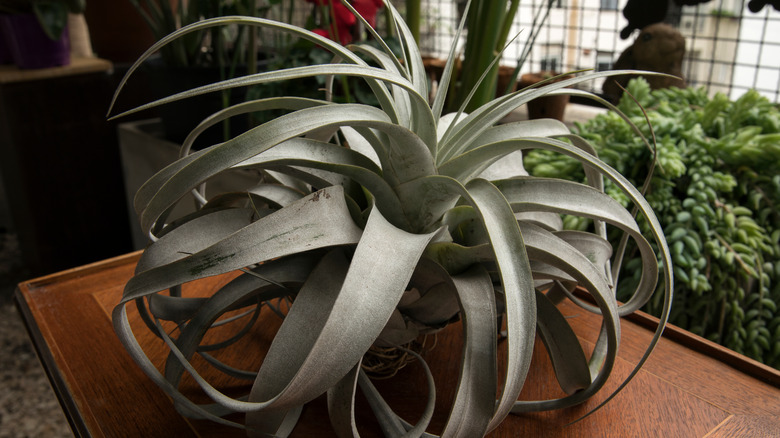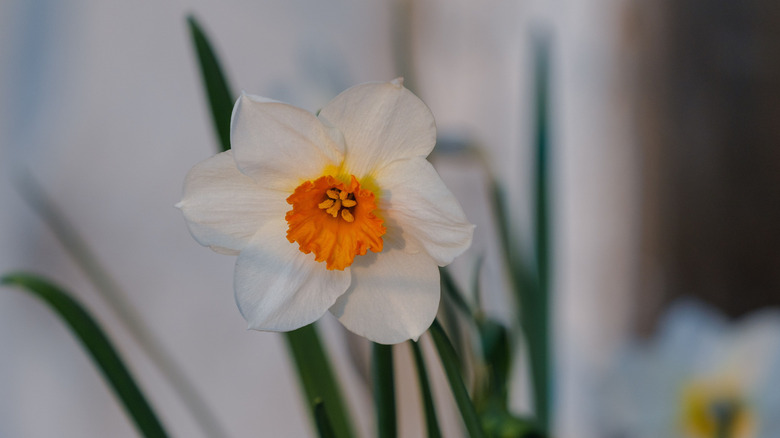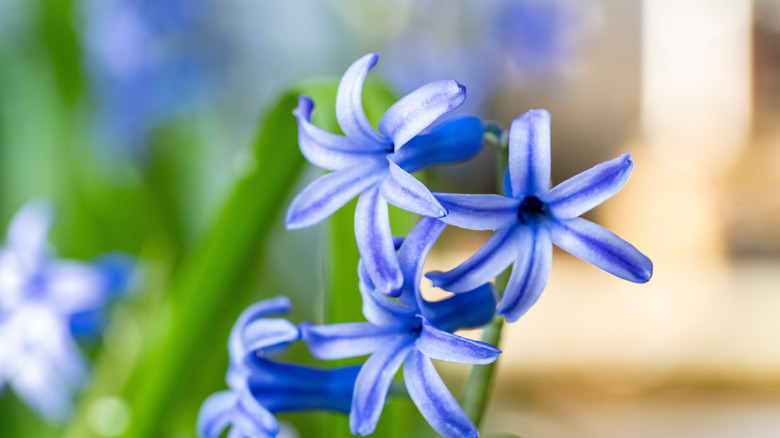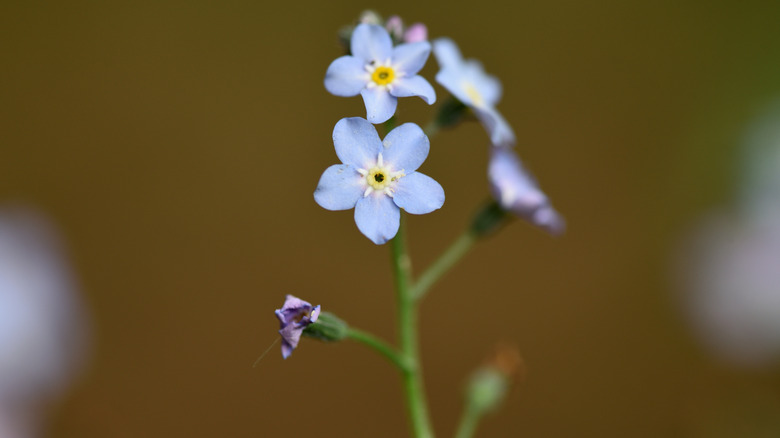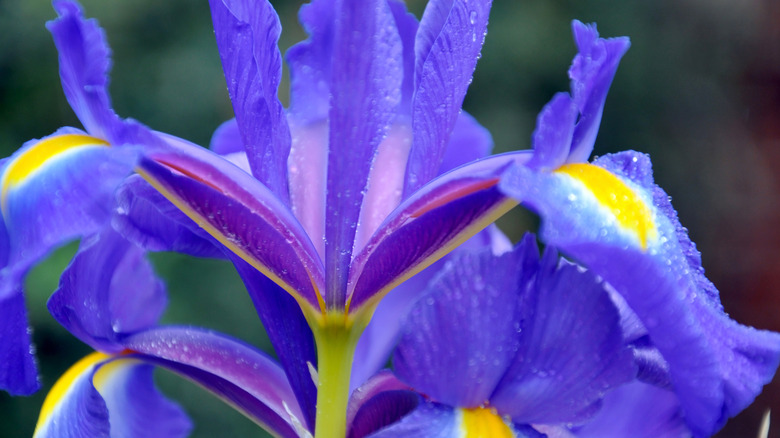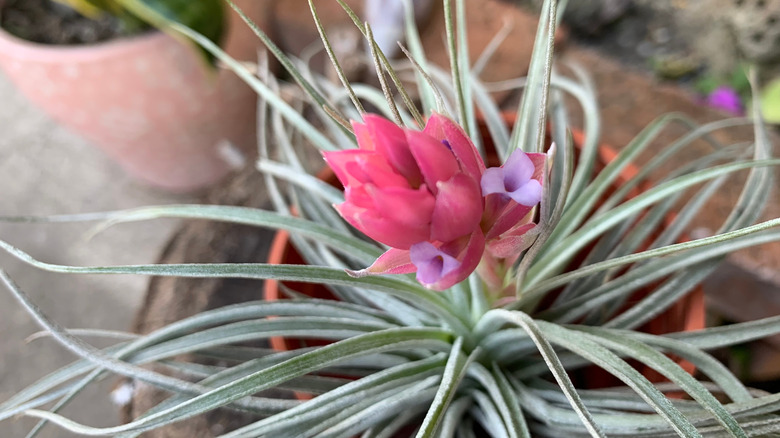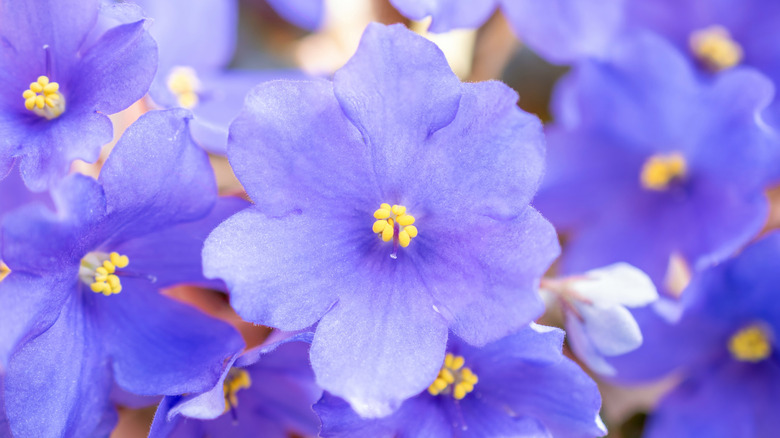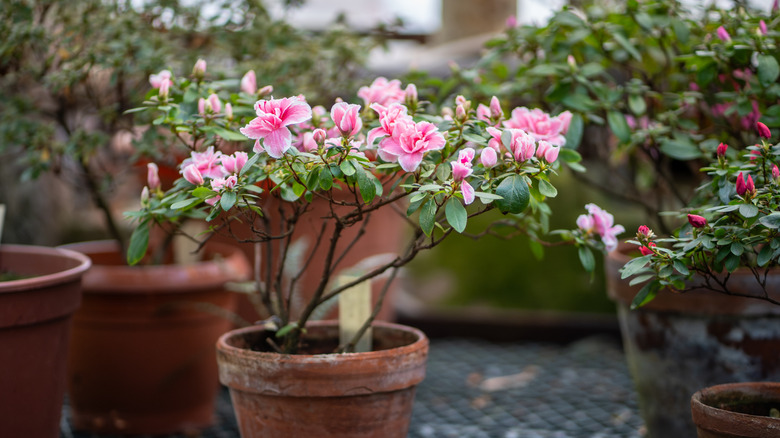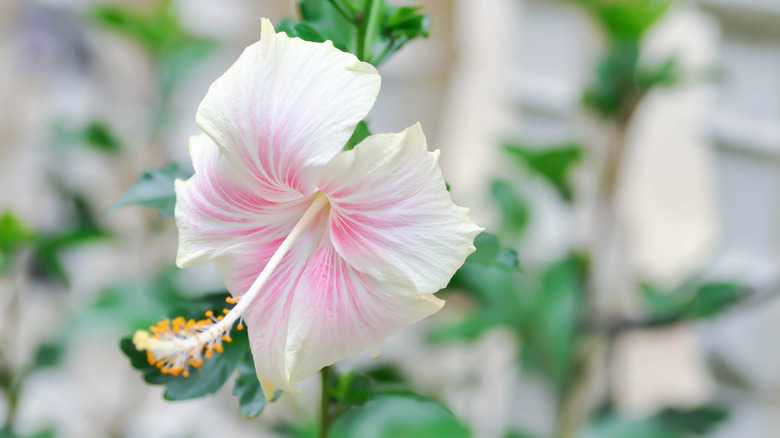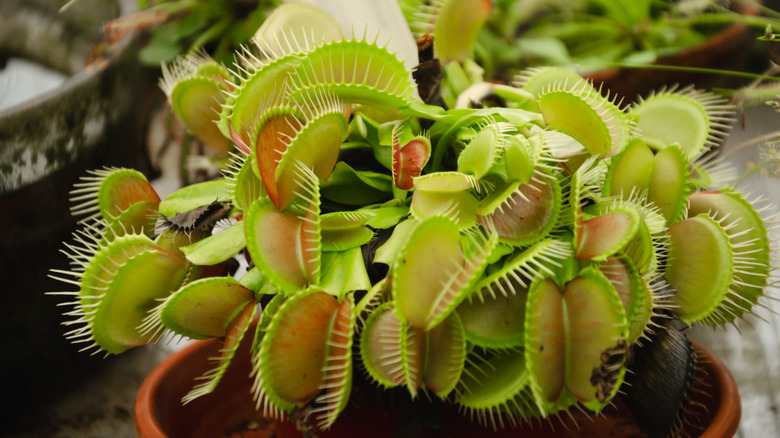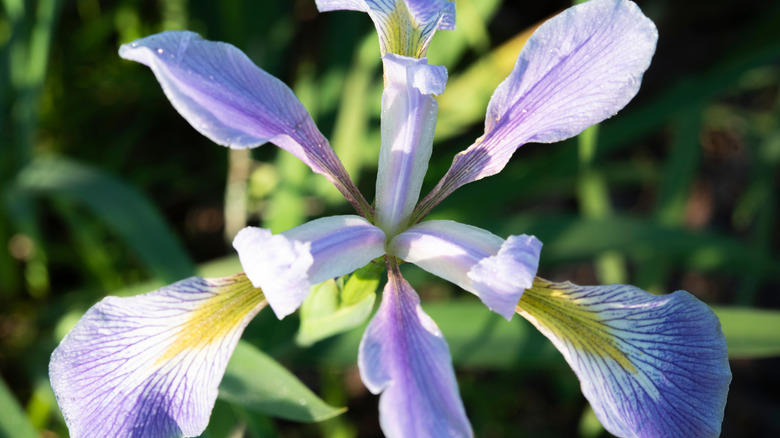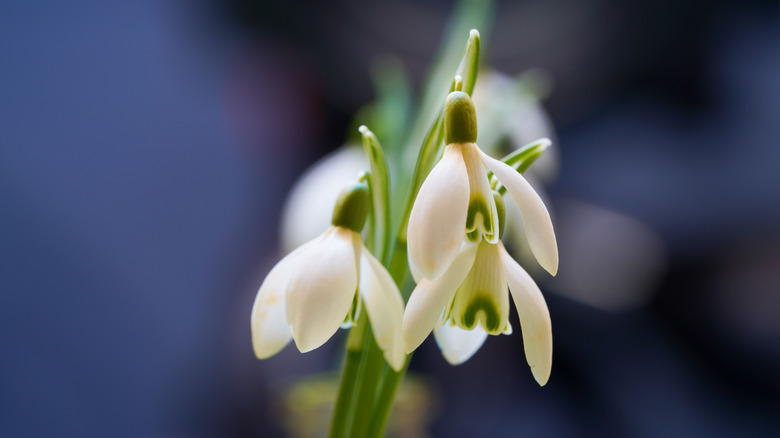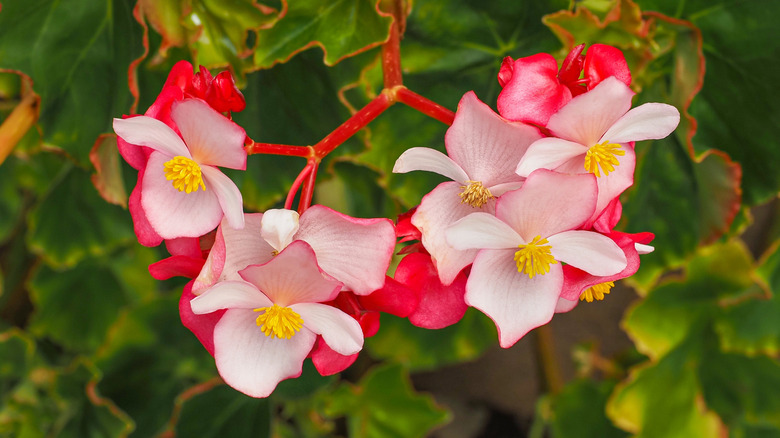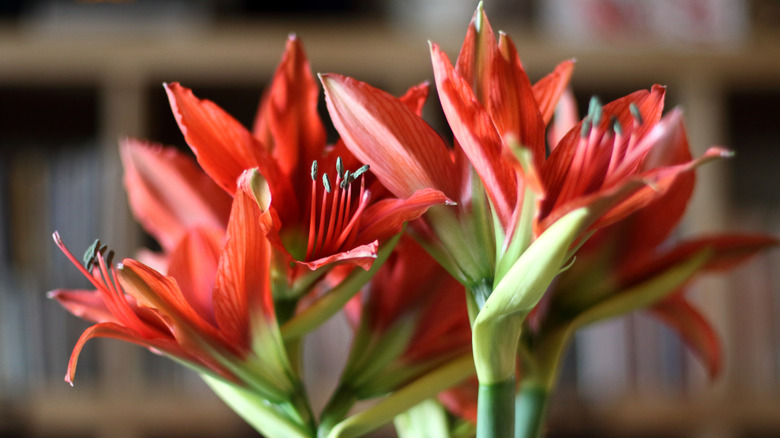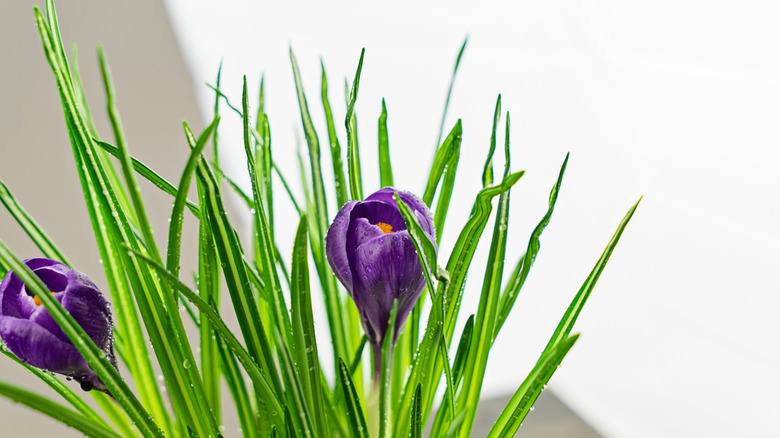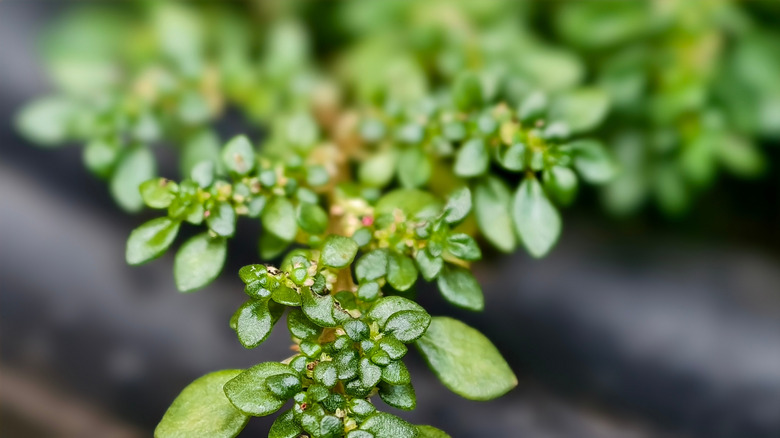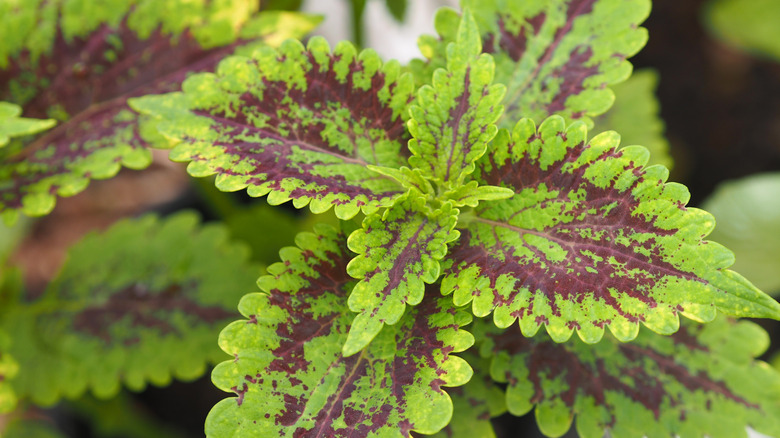25 Gorgeous Flowers You Can Grow Indoors Without Any Soil
If you're someone who doesn't love the idea of bringing soil indoors but still wants the lush aesthetic of houseplants, there is a solution for you. You can easily grow some of your favorite blooms using non-soil alternatives, like water, clay pebbles, or peat moss. These soil-free solutions can also include a mixture of water and liquid fertilizer, or a blend of soil mixes like sand and perlite.
Using just water as a means of growing your plants is a gardening format called hydroponics. It allows you to have thriving plants all year long, reduces your overall water usage, and decreases the risk of bringing in fungus gnats or larvae into your home. Another soil-free option is to grow epiphytes like air plants, or tillandsias. These plants don't require soil and mainly receive nutrients through air and water. If you want to start adding flowers to your home and avoid the mess of soil, you aren't restricted to just houseplants like spider plants or pothos. You can still grow some classic flowers, like tulips, daffodils, and hyacinths.
Sacred lotus
Chances are you've seen sacred lotus flowers (Nelumbo nucifera) floating in tranquil ponds, confirming that these flowers can, in fact, be grown in just water, with little to no soil required. To start the process in your home, place your lotus seeds into warm water and leave them in the sun for about a week or till they begin to sprout. Next, you can add them to a larger bowl with a few inches of clay or sand. Cover the material with water until it is submerged, and you're good to go.
Peace lilies
You could add a touch of elegance to your home by growing peace lilies (Spathiphyllum). This perennial requires indirect sunlight, and just the roots should be submerged, not the rest of the plant, as that could cause it to rot. You can propagate a section of a peace lily using just water, keeping the roots submerged. For an already mature peace lily, rinse any excess dirt from the roots and place the plant into a deep container of water. Don't forget to add a liquid fertilizer at least once a month. As the flower uses up the water, make sure to replenish it.
Cardinal flower
As long as you provide an alternative solution to a nutritious soil, you can grow aquatic cardinal flowers (Lobelia cardinalis) in water in your home, using containers like an old fish tank. It can be a perfect addition to an aquarium. These flowers require full to partial light, consistent trimming, and can be grown submerged or immersed. The closer to the light the plant is, the more likely it will produce its iconic red flowers.
Tulips
Using a process called forcing, you can successfully grow tulips (Tulipa) indoors any time of year without the use of soil. You will need a specific type of container that allows the flowers' roots to be submerged in water, but keeps the bulbs dry except for the very bottom. You can use a glass jar, bowl, or bulb vase. Tulips must be chilled for 12 to 16 weeks prior to growing, but you can also purchase pre-chilled bulbs.
Sky plant
Sky plant (Tillandsia ionantha) is one of the over 600 species of Tillandsia, which are air plants that can grow from just water, air, and humidity. These houseplants do not require any soil and can be housed on wood, in a glass container, in a terrarium, or even hung from the ceiling. Ideally, sky plants live in a space with indirect light and receive a 30-minute soak in water every few weeks. In between soakings, you can mist your sky plant for regular hydration.
Daffodils
Similar to tulips, daffodil (Narcissus) bulbs can be grown indoors at any time of the year, thanks to the forcing method. Daffodil bulbs also require a chilling period before they can be grown. You'll want to make sure your chosen containers have at least 4 to 6 inches of water and that just the bottoms of the bulbs touch the water; otherwise, they may rot. Until the roots form, keep the bulbs in a dark and cool environment. Once roots have formed, you can move the flowers into a sunnier location.
Laceleaf
Another plant that can thrive in just water, laceleaf (Anthurium) is an easy addition to your houseplant collection. Before adding your laceleaf to a vase of water, make sure to rinse the roots of any soil. Fill the vase with room temperature water and add your flowers, making sure to keep the leaves out of the water. When it hits about three weeks, you can change out the laceleaf's water and clean out the vase to remove any buildup.
Moth orchid
Before you grow a moth orchid (Phalaenopsis) inside using just water, make sure to thoroughly rinse the roots to get rid of any remaining soil. The roots must be fully underneath the water in your chosen container, and the stems and leaves must remain above the water's surface in order to prevent rot. These flowers require indirect light and a water change every one to two weeks. You can also add a liquid fertilizer, but moth orchids should be able to thrive with just water and light.
Xerographic air plant
Similar to its relative, the sky plant, the xerographic air plant (Tillandsia xerographica) can also easily be grown indoors with a regular hydration schedule and zero need for soil. Since they receive their nutrients through their leaves, these air plants only require regular misting and a 15-minute soak every few weeks. While these plants don't typically require extra fertilization, you can add liquid fertilizer to your spray. This houseplant can also produce a spikey and brightly colored flower stalk.
Paperwhite narcissus
Paperwhite narcissus (Narcissus papyraceus) bulbs can also be forced indoors using just water. You'll only need your flower bulbs, a shallow container, a handful of gravel, and water. Add your gravel to the bottom of the container before setting the bulbs on top with the tips pointing up and securing with more gravel. Then you can add your water, making sure it just touches the bottom of the bulbs. Your paperwhite narcissus bulbs should start rooting in two to three weeks.
Hyacinth
Using pre-chilled bulbs, you can easily grow hyacinths (Hyacinthus orientalis) inside using just a container of water. Similar to paperwhite narcissus, you'll want to first add gravel to your chosen container before placing the bulbs on top, tips facing upwards. When adding your water, make sure it only just touches the base of the bulbs; too much water can cause the bulbs to rot. Keep these bulbs in a cool, dark spot, and roots should emerge in one to two weeks. Once roots have formed, move the bulbs to a sunnier spot.
Water forget-me-nots
If you want to add a touch of color to your houseplants throughout the year, consider planting water forget-me-nots (Myosotis scorpoides). These tiny blue and yellow flowers are easy to cultivate in your home using just a container of water. Add up to 3 inches of water and gravel into a container to support your seedlings, making sure that the plant is submerged about 1 inch into the water. Roots should form after a few weeks.
Dutch iris
Before you can add pretty Dutch irises (Iris hollandica) to your collection of houseplants, make sure you either purchase pre-chilled bulbs or chill them yourself for eight to 12 weeks. To start the forcing process, add your bulbs to a shallow container with a few inches of gravel, propping them up. Next, add your water so that the liquid just touches the bottom of the bulbs. At first, you can keep your container in a spot with indirect light to allow the roots to grow. Once they have sprouted, move the iris bulbs to a sunny area.
Cotton candy
One of the more colorful varieties of air plants, Tillandsia 'Cotton Candy' (Tillandsia houston) is a hybrid of Tillandsia stricta and Tillandsia recurvifolia. Like its air plant relatives, 'Cotton Candy' has no need for soil and instead can simply be grown in a glass container with indirect light. To ensure good hydration, soak these plants twice a week from spring to fall and mist every few days. This 'Cotton Candy' variety should produce tubular, bright pink-purple bracts and lavender-colored flowers in the spring and summer.
African violets
African violets can easily grow in water; simply place a trimmed cutting into a container of water, making sure the stem is facing downwards. Your cutting should be kept somewhere warm with good light in order for the roots to start growing, which will happen in about four to six weeks. To keep the plant growing, you can transfer it to a larger container, making sure to keep the leaves above the water to prevent rot.
Azaleas
Azaleas (Rhododendron simsii) thrive best in more acidic materials, ideally with pH levels between 4.5 to 6.0. To create this environment, you can use a potting mix containing materials like peat moss, compost, or pine bark mulch. You can also create your own mix with those ingredients, as well as adding sand or vermiculite. Perlite is another welcome addition to help the plant continue to drain and avoid root rot. As long as you can create an ideal material to feed and nourish your azaleas, you can grow these gorgeous blooms inside without soil.
Hibiscus
Whether you want to grow your own hibiscus plants over the winter or you want to watch the process of the flower taking root, you can do this all in the comfort of your living room, no soil required. Hibiscus flowers can be grown using just water. You'll need a 4 to 6-inch-long cutting, cut just below a node, and a glass container of water. Place the stem in the water, keeping just the bottom node submerged. Hibiscus stems require indirect sunlight and changed water every few days.
Venus flytraps
One of the most popular of the carnivorous plants, the Venus flytrap (Dionaea muscipula) doubles as a houseplant and pest control, as it catches flies, spiders, and even beetles within its spikey hinged flower heads. This quirky, wild-looking plant can actually be grown indoors without your typical soil. It requires a more acidic mixture, ideally within the range of 4.5 to 5.5 pH. You can either purchase pre-made or create your own using ingredients like peat moss, sand, and perlite.
Southern blue flag
Southern blue flag (Iris virginica) is a plant that loves moist environments, and these flowers can be grown in up to 6 inches of shallow standing water. While they are typically known for growing outdoors in marshes and wetlands, these flowers can also be set up inside in a container. When grown, these flowers require full sun for at least six hours a day. When they are propagating, however, it's important to keep them in a moist, shady spot until the roots have sprouted.
Snowdrop
Using the same forcing method, you can grow smaller bulbs like snowdrops (Galanthus nivalis) with just water and a glass container. Before adding the bulbs to the water, ensure to rinse them off to remove any soil or dirt. Next, you can add in your bulbs, making sure to keep their tips facing upwards in a cool, dark space. Once the tip has grown to be about 3 to 4 inches, which can take anywhere from eight to 12 weeks, you can move them into the sun to continue growing.
Begonias
If you plan on growing begonias indoors, you do not have to use soil. In fact, some gardeners even recommend that you don't do so as to avoid pests and diseases. Instead, you can plant your brightly colored begonias in a porous mix containing ingredients like coco coir, peat moss, compost, and pine needles. Ideally, your mixture should have a pH level in the more acidic 5.5 to 6.5 range. Begonias are prone to root rot, so you want to make sure your mix is coarse enough to be well-draining.
Amaryllis
In order to grow a gorgeous amaryllis (Hippeastrum) indoors without any soil, you will need amaryllis bulbs, a tall water container, and a base of gravel. Some gardening experts also recommend purchasing activated charcoal, as it can help the water stay fresh. Place your gravel in the container and tuck about 2/3 of the bulb in between the rocks. Add your water so that it's just touching the bottom of the bulb. Your amaryllis flower should bloom in about four to six weeks.
Crocus
If you want to grow crocuses indoors without the mess of soil, you only need a few supplies to get started. Make sure to purchase pre-chilled bulbs or chill them yourself for at least 10 to 14 weeks. You can either purchase a bulb-specific jar or make your own by adding gravel to the bottom of a glass to prop up your bulbs. Add water until it touches just the bottom of the bulbs, and keep the containers somewhere dark and cool until the roots start to form. Then you can place the plants in a sunnier spot and wait for them to bloom.
Baby tears
If you want to add a lively green plant to your houseplant collection without the mess of soil, baby tears (Soleirolia soleirolii) is an easy option, as it can thrive in water. To start the growing process, you'll need a small cutting of baby tears with the lower leaves removed to avoid any rot. Just the stem should be submerged. Make sure to change out the water frequently and avoid placing the plant in direct sunlight, as it could scorch the leaves.
Coleus
Coleus (Coleus scutellarioides) can successfully be grown without the any soil. Using just water, you can easily propagate your coleus flower cuttings without the need for any additional fertilizer. To grow these colorful greens, you'll need to ensure that the lower leaves of your cuttings are removed before adding them to your chosen container of water. This ornamental flower requires indirect light in order to grow and produce roots.
